 |
 |
 |
 |
 |
 |
 |
 |
 |
 |
 |
Important issues
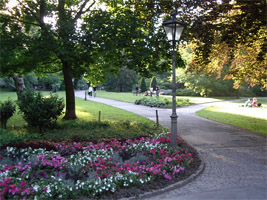
Links between issues of the urban green/blue infrastructure and sustainability could be traced in terms of both the spatial and functional structure of cities and towns.
European policy on sustainable urban development has increasingly focused its attention on the importance of open green space since early 1990s. The natural areas protection and enhancement was set as one of the main targets for future action by the Green Paper on the Urban Environment (EC, 1990).
Open spaces and green areas in European cities are mentioned to be under continuous threat due to more competitive uses of limited land resources in Europe’s Environment: The Dobris Assessment, the first pan-European state-of-the-environment report that covered 46 countries (EEA, 1995). The document discusses loss of green space both within and around urban areas and resulting threats to biodiversity and to quality of life of citizens. The reported tendency and the estimated importance of green systems to urban sustainability has motivated numerous European studies in recent years. Four dimensions of urban green space functions and development are in the focus of current research: spatial, ecological, cultural and social (COST C11, Final Report).
Based on PETUS literature review and case studies, three main issues in the field of urban green/blue infrastructure could be outlined as being of particular importance to planning and management practices aimed at urban sustainability:
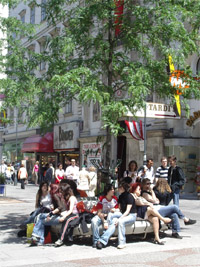
• Quantity of the urban green space
Urban green space varies considerably in size and type alongside with the diversity
of urban patterns through Europe. The balance between open and built up areas
in cities and towns results from local peculiarities of climate, relief, geology,
hydrology, topography, etc. but also from varied cultural traditions and life
patterns. Densification of city centres and exerted building pressure on urban
green space together with urban sprawl into the green space surrounding cities
is a tendency reported in many European cities (EEA, 1995).
The sustainability debate on reasonable urban density has posed the idea of the compact city (providing for efficient land use and low transport expenditures) versus the ‘ecocycle’ one (with lower density, yet enhancing circular metabolism in urban systems by providing valuable green space for carbon storage and sequestration, retention of stormwater and upgrading wastewater etc.). Some authors consider the compact city an important factor for moving closer to urban sustainability (Naess, 2000). Others are however concerned with the social consequences of losing green areas in cities – diminishing recreational capacity and increasing urban stress. This is regarded as the reason for inhabitants (especially ones with children) to move out to the outskirts - thus causing even faster urban sprawl and greater transportation expenses. The implementation of ecological and systematic approaches to urban green space is recommended together with taking into consideration broader temporal and spatial considerations (C11, Final Report).
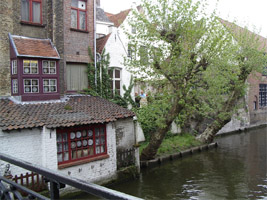
The urgency of planning and management actions to re-conquer for contemporary urban life the degraded, polluted and abandoned ex-industrial areas by turning them into green recreational areas is broadly accepted throughout Europe. PETUS case studies Millennium Coastal Park (Llanelli, UK) and Harbour Bathing (Copenhagen, DK) present successful practices in this field. Yet they also remind that while developing new activities to achieve economic benefits for the local community, the additional long-term pressure on the natural environment should be taken into consideration as well.
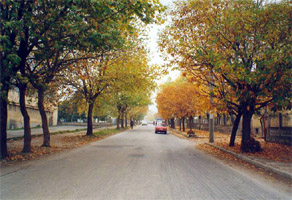
• Quality of the urban green space
The increasing range of “quality” requirements to the urban green/blue
infrastructure results from the great variety of functions attributed to them.
The complexity of defining needed ‘quality’ of urban greenery is
also determined by the knowledge continually gained about the ways in which
the urban green system influences different aspects of human life and the urban
system as a whole.
The main challenge to projects dealing with urban green spaces regeneration
is how to provide a wider range of functions and relevant facilities there while
guaranteeing the maintenance of the ecological equilibrium and the preservation
of biodiversity. Increasing the number and variety of leisure and entertainment
facilities within the green system could be a threat to ‘silent’
recreation activities as well as to species and habitats.
Plant protection carried out without tracing unintended harmful effects of pesticides
on non-target organisms is another possible threat to the quality of urban green
space, causing both biodiversity reduction and stormwater pollution.
Two PETUS case studies present regeneration projects aimed at better quality of existing green space (City Park, Dobrich, Bulgaria; Development Plan of a Ski Centre, Chepelare, Bulgaria).
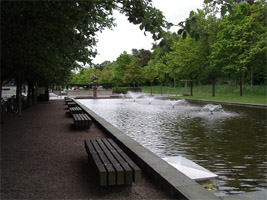
• Effectiveness of the urban green/blue infrastructure
The issue is related to a generally estimated lack of adequate instruments to
guarantee and trace the real effect of the infrastructure work. The use of urban
green/blue space is only indirectly paid for by citizens through local taxes.
Feedback on estimated effects of functioning is therefore not easy to get. Another
important challenge to local authorities is also how to raise the effectiveness
of urban green/blue infrastructure within the constraints of usually modest
financial frameworks and without raising local taxes. This could be directly
related to the issues of communication in decision-making with concern for power-public-private
relations in urban planning and management. The interaction between residents,
interest groups, planners, municipal departments and other actors and discourses
in strategic and operational planning approaches is in the focus of numerous
studies on local policy innovative approaches. ‘Psychologically accepted
environment’ and ‘sociotops’ are terms applied in Stockholm
within a methodology that takes into consideration commonly experienced and
used places for a specific culture (Ståhle, 2002). Place-oriented approaches
to urban greenspace design address four qualities of urban green spaces: accessibility,
activities, comfort, and sociability (Project for Public Spaces, http://www.pps.org).
Methods are being developed to appreciate the specific needs of vulnerable groups
whose needs are often neglected: children, elderly people, ethnic minorities
(COST C11).
Reviewed PETUS case studies address two groups of general issues related to the efforts to guarantee the effective work of urban green infrastructure through the planning and management processes: (a) needed holistic approaches to urban green/blue issues in order to integrate environmental considerations (biological diversity) with economic/commercial, social (health, safety) and cultural aspects; the possibilities for multidisciplinary co-operation between researchers from the natural, the technical and the social sciences (Open Space Planning, Graz, Austria); (b) development of specific management approaches to be applied to different types of urban green space (Urban Green Space Differentiated Management, Rennes, France)
For more information refer to: “Green/Blue Sector Important Issues Report”